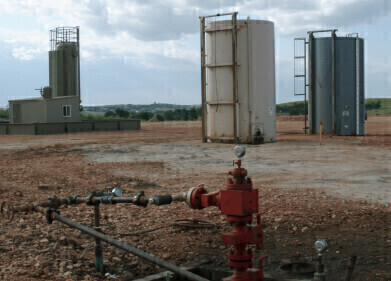Lubricant Analysis
What Are the Properties of Lubricants? - Flash Point
Mar 23 2022
Flash point is one of the most critical properties assessed when appraising the quality of a lubricant and determining its suitability for an application. The term describes the lowest temperature at which vapours released by a lubricant combust when exposed to an ignition source. So, lubricants with a low flash point will ignite earlier than lubricants with a higher flash point.
Why flash point matters
Fire is one of the biggest risks faced by the oil and gas industry. It’s a major concern for not only drilling and exploration sites but also refineries. For this reason, flash point is often one of the first properties considered when selecting lubricants for use in the oil and gas sector.
As well as assessing the fire risks and safety credentials of lubricants, flash point can offer insight into other traits. When combined with tests for viscosity and specific gravity, flash point can help establish the quality of the crude oil used to manufacture lubricant and the refining process it underwent. Additionally, flash point can be used to identify whether the base oil used to manufacture the lubricant is pure or a blend of two fractions.
With so much to learn from flash point alone, it’s no wonder it’s one of the most important properties considered when selecting lubricants.
Calculating flash point
The ASTM D92-18 Standard Test Method for Flash and Fire Points by Cleveland Open Cup Tester is one of the most common methods used to determine the flash point of petroleum products, including lubricants. ASTM D93-20 Standard Test Methods for Flash Point by Pensky-Martens Closed Cup Tester is another popular method used to determine flash point over a temperature range of 40 °C to 370 °C.
Synthetic lubricants generally offer higher flash points as they start to evaporate at significantly higher temperatures than mineral oil lubricants. That said, every application is different and there’s no one-size-fits-all approach when it comes to selecting lubricants.
The next generation of high flash point lubricants
As the world transitions away from fossil fuels, scientists are exploring new lubricant solutions. The latest studies suggest natural oils extracted from crops such as canola are not only eco-friendly but offer excellent lubrication properties and high flash points.
Flash point is just one of many properties analysed when selecting lubricants. We take a closer look at what characteristics are assessed when developing lubrication strategies, including key traits such as viscosity, pour point, API gravity and more in ‘What Are the Chemical & Physical Properties of Lubricants?’
Digital Edition
PIN 25.4 Aug/Sept
September 2024
Analytical Instrumentation - Novel and Rapid LSC method for the analysis of biogenic carbon in fuels Measurement and Testing - Matrix evaluation on the Xplorer-V with Vectra autosampler accordi...
View all digital editions
Events
Nov 04 2024 Abu Dhabi, UAE
Nov 04 2024 Kigali, Rwanda
Nov 05 2024 Toronto, Canada
Nov 05 2024 Paris, France
Nov 12 2024 Cologne, Germany



















